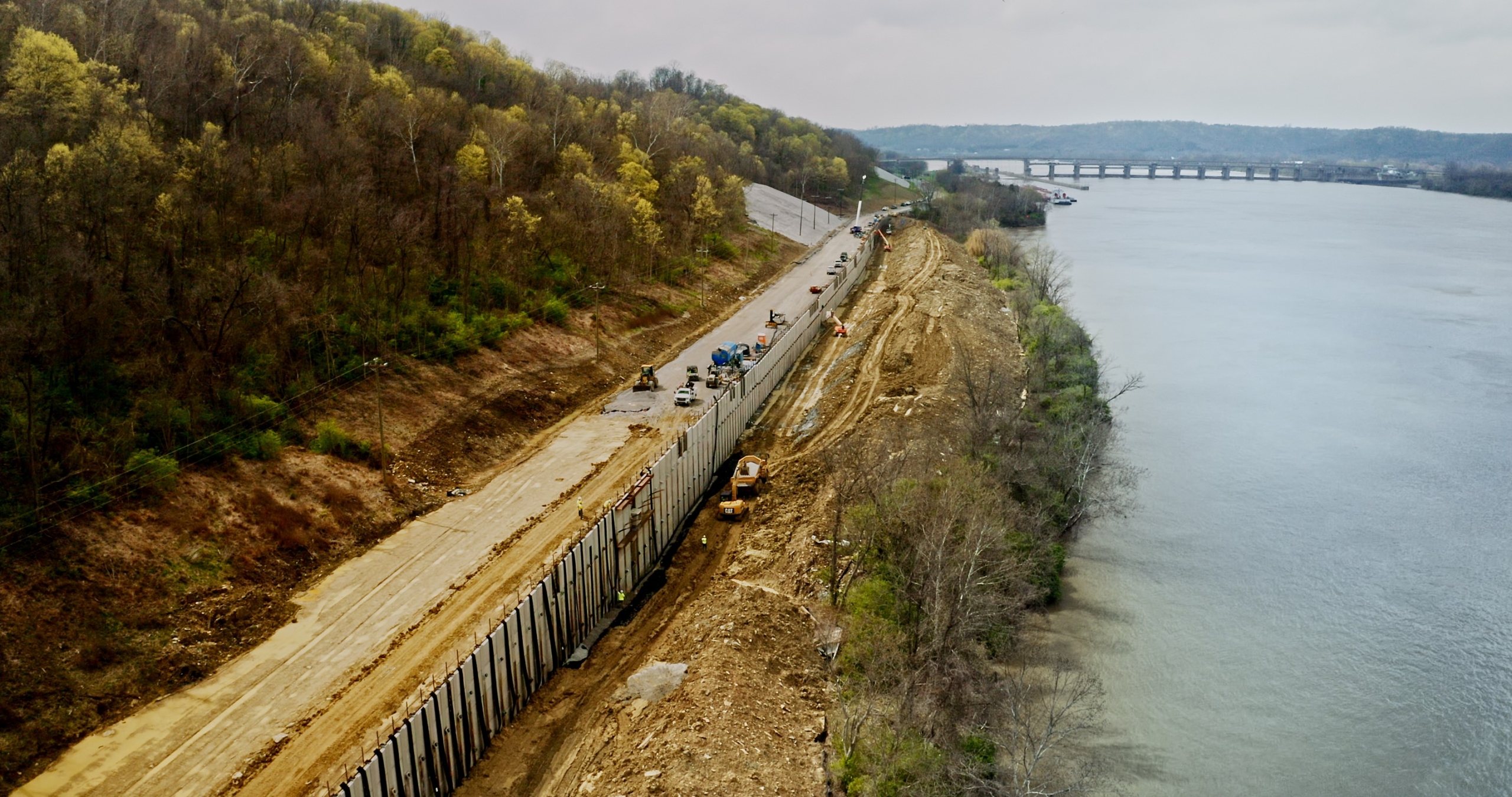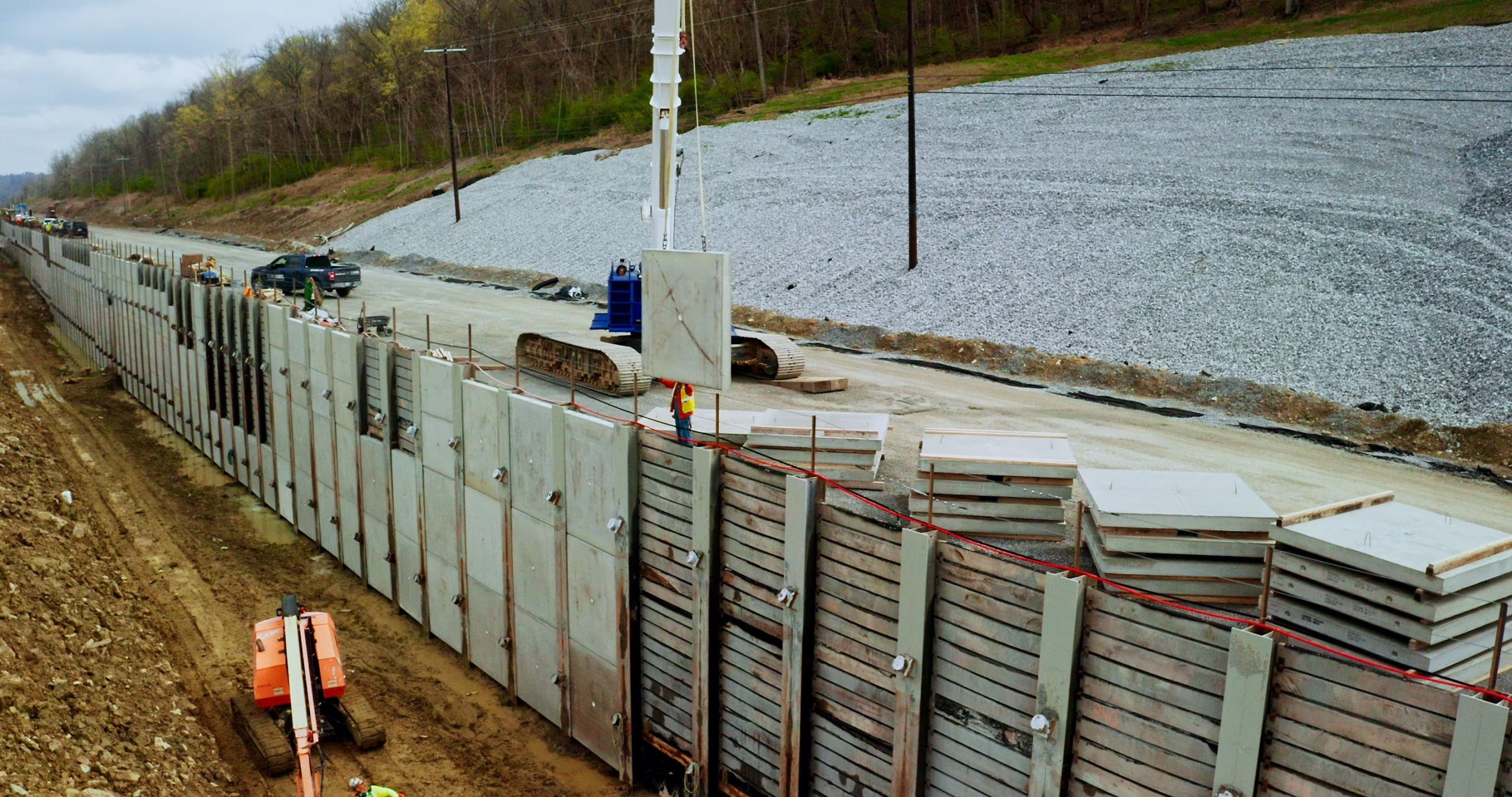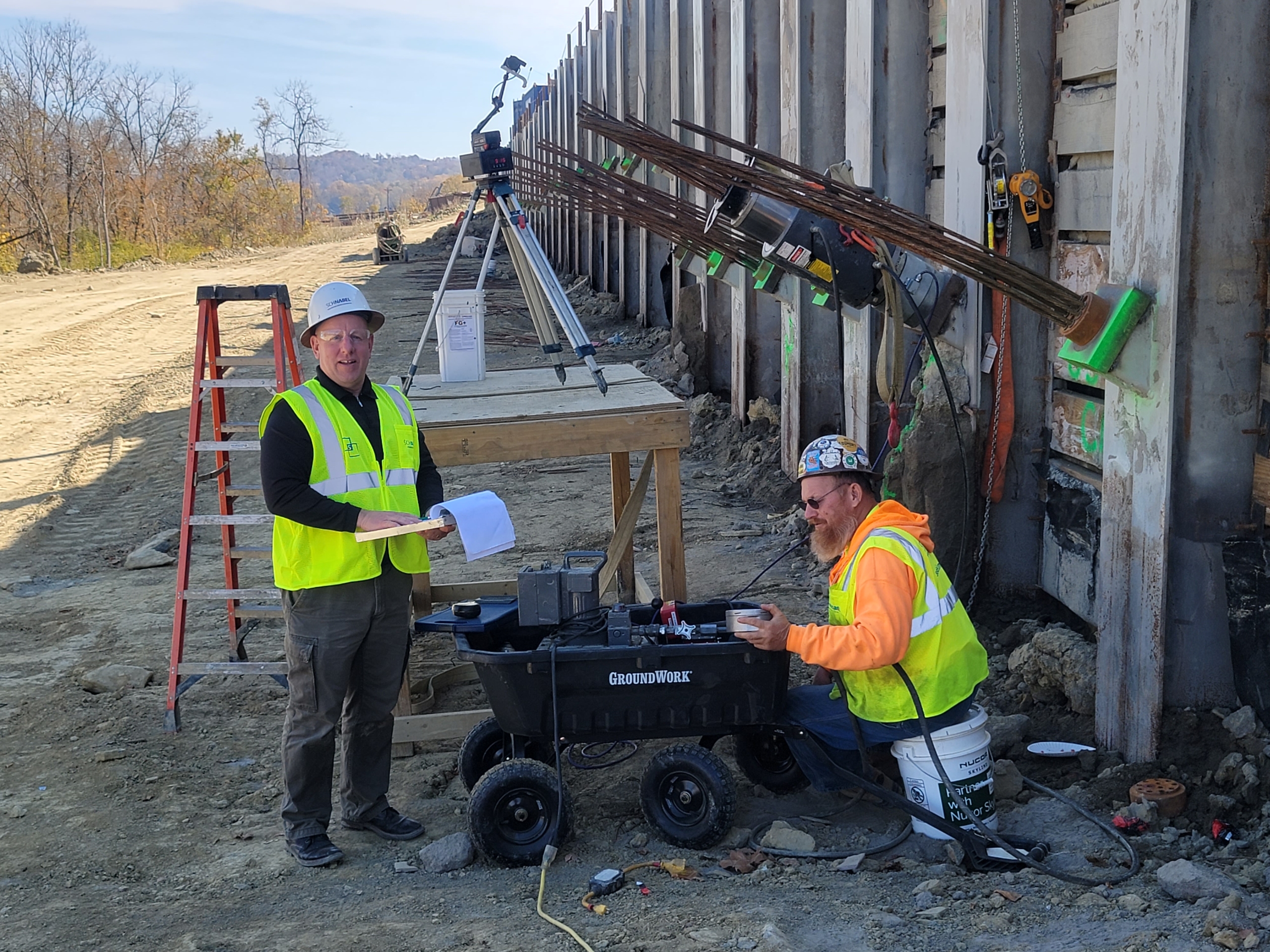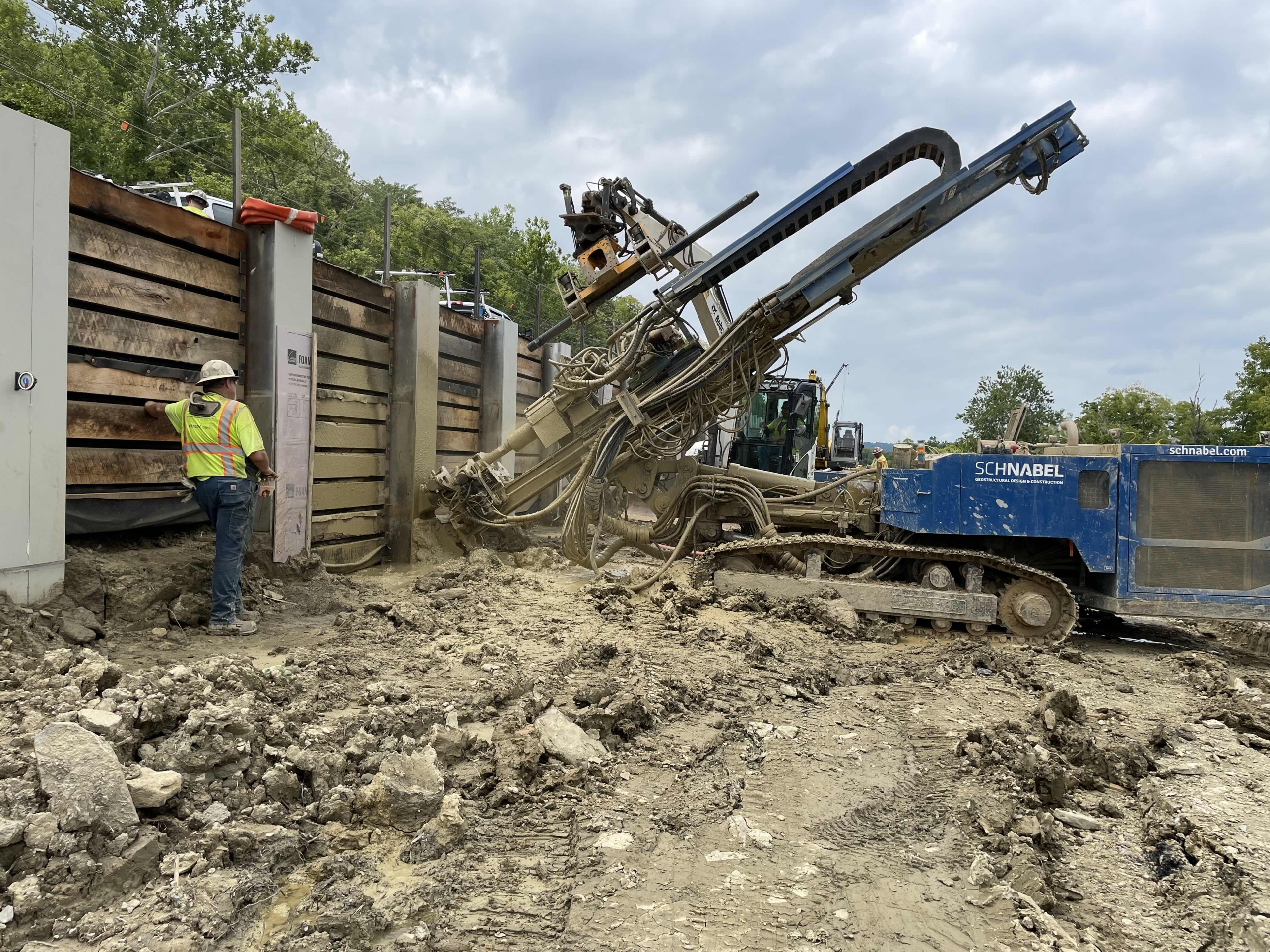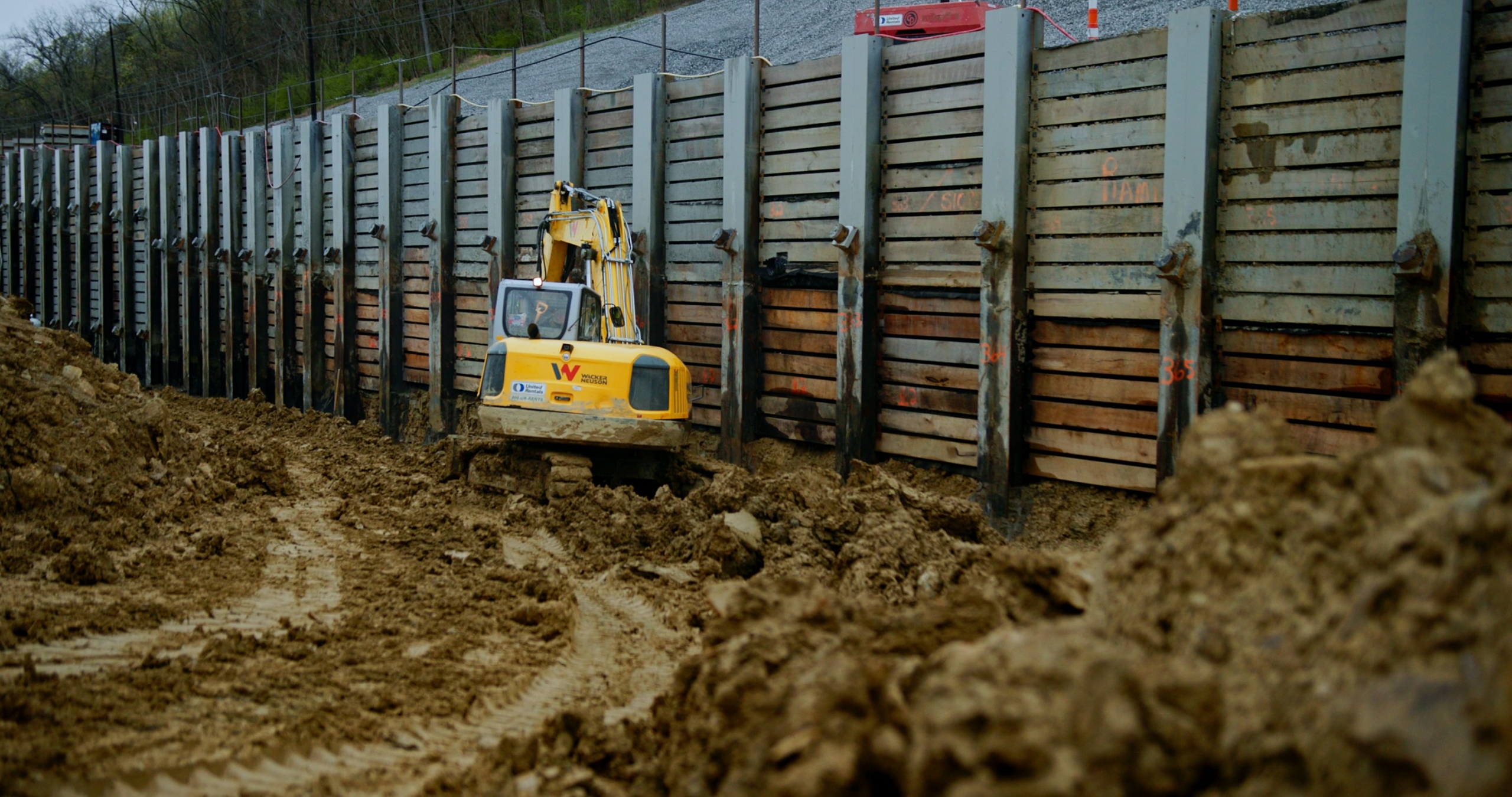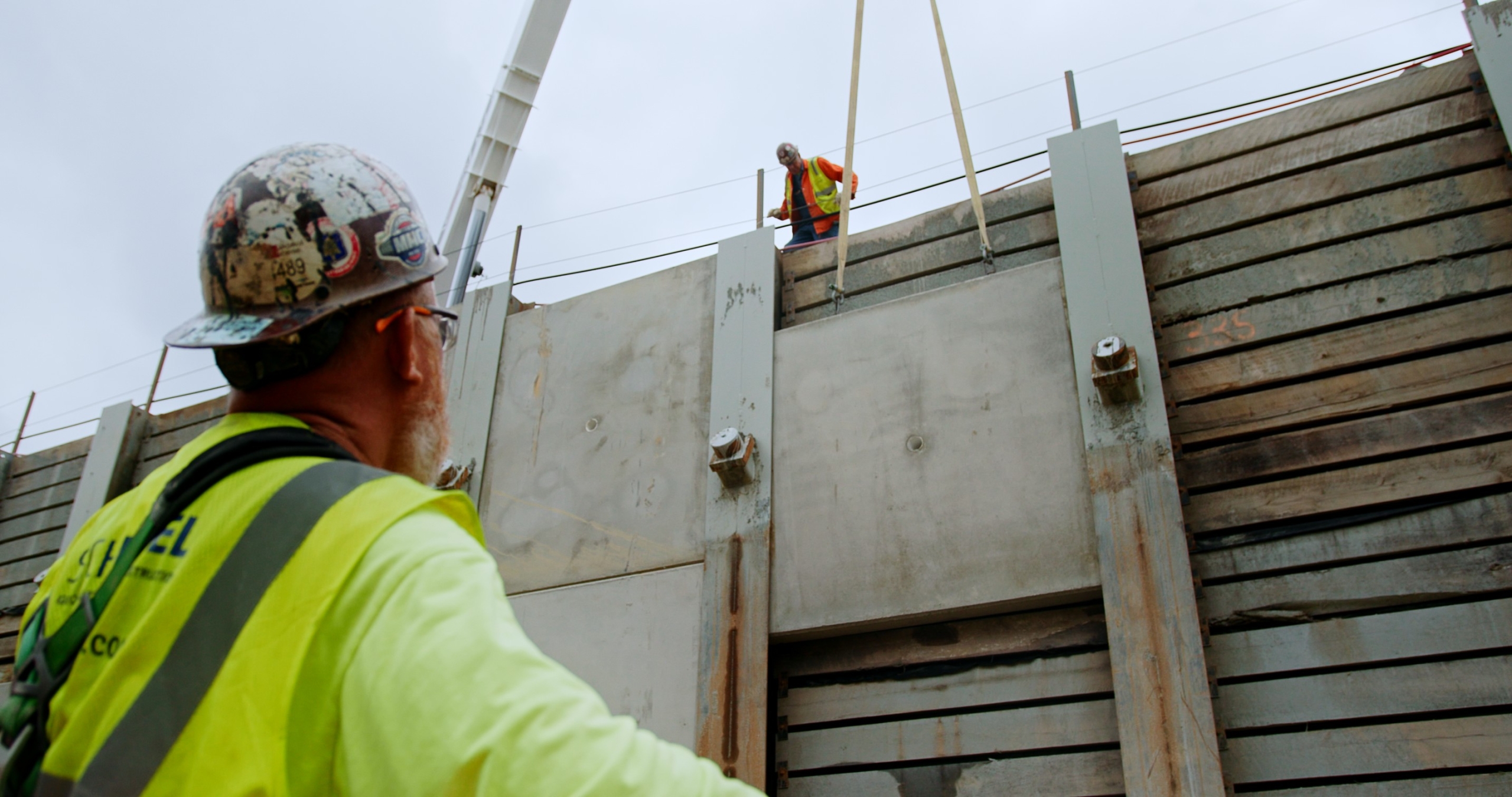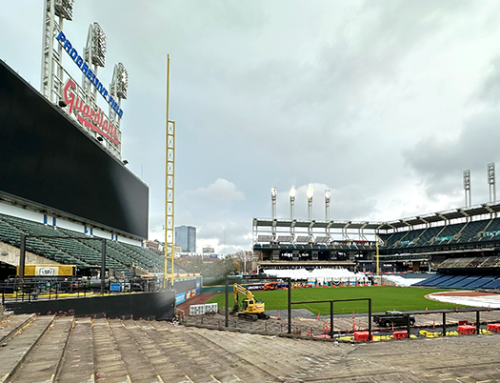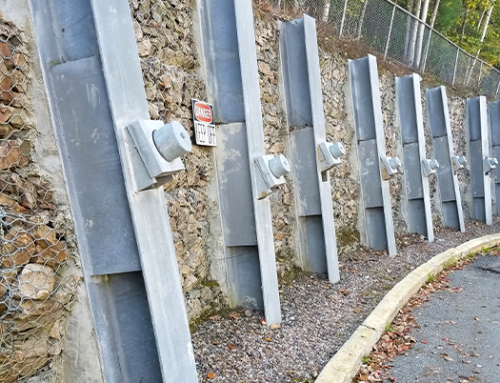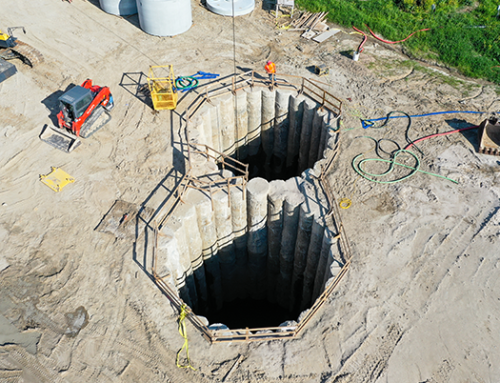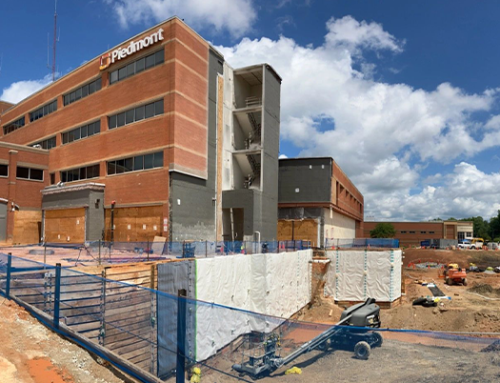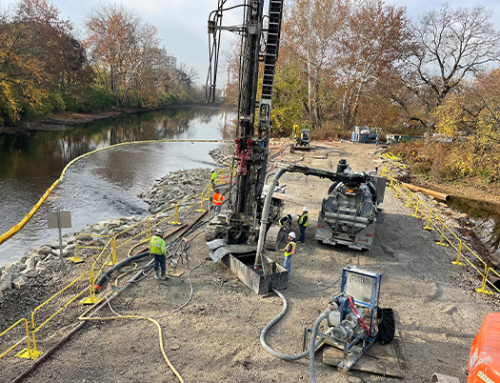Gallatin County Slide Repair Project | Kentucky
City: Louisville
State: Warsaw
Owner: Kentucky Transportation Cabinet
GALLATIN COUNTY LANDSLIDE REPAIR PROJECT INFORMATION
On June 9, 2021, Schnabel was awarded the $18M Gallatin County Slide Repair project as the prime contractor for the Kentucky Transportation Cabinet (KYTC) Department of Highways. The project is a 1.25 mile-long reconstruction of U.S. 42 located roughly halfway between Cincinnati, Ohio and Louisville, Kentucky. U.S. 42 is a two-lane scenic highway that runs along the Ohio River. This section of the highway has been prone to landslides since it was built. Work began on the project in November of 2021.
SCOPE OF WORK
As part of the Gallatin County Slide Repair project, Schnabel is constructing a 0.6-mile-long tieback retaining wall to help stabilize the existing landslides. Schnabel designed the wall using KYTC apparent earth pressure and toe embedment parameters. The wall has one to two tiers of tiebacks with 385 double wide-flange soldier beams, 540 each 10-strand fully encapsulated tiebacks, 75,000 square feet of temporary lagging, and 65,000 square feet of precast concrete panels.
PROJECT REQUIREMENTS & CHALLENGES
Construction of the project required that the section of road affected by construction be closed resulting in customers of local businesses no longer being able to conveniently reach their destination as well as other economic/emergency impacts. Schnabel negotiated a $1.4 million lump sum incentive with a $10,000 per calendar day disincentive agreement with KYTC to open up two-way traffic by Memorial Day 2023 – six months earlier than the original plan. Any remaining work after that date, including precast panel installation, will be completed after the road is reopened. To accomplish this incentive, Schnabel needed to allocate more resources as well as re-evaluate the schedule to include additional shifts to ensure that this initiative is achieved. Schnabel experienced several complex challenges on this project. During the utility relocation work, the landslide continued to move, resulting in additional displacements of around one inch per month prior to the soldier beam installation. In addition, the lack of suitable survey control points made it difficult to monitor landslide movements.
MONITORING
To assist with monitoring, eight inclinometer casings were installed in SB drill holes. These have been manually read since inclinometers are more reliable than our survey monitoring data. Another problem we encountered was the initial stressing of the tiebacks, which resulted in around five (5”) inches of movement at top of the beam. Schnabel Senior Geostructural Engineer, Doug Hardin brainstormed solutions for this problem and settled on installing diaphragm walls perpendicular to each soldier beam. These concrete-filled trenches resisted wall movement by increasing sliding friction and bearing behind the soldier beam tops. This solution reduced the movement of the soldier beam tops to around 1.5” allowing for precast panel installation.
CONCLUSION
Schnabel installed all the soldier beams, tiebacks and wood lagging for the project. Schnabel’s primary subcontractors are Dudley Construction (excavation, traffic control and utilities), Hinkle Contracting (paving), Hayes Drilling (soldier beam drilling), and Terracon (tieback quality control). This project along with our discussions with KYTC and their consultants, LOCHNER & STANTEC, helped Schnabel secure two additional KY contracts, Panbowl Lake Dam and U.S.460, totaling $7.23M.
